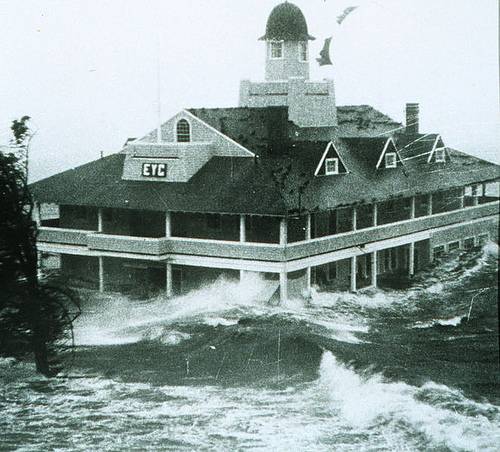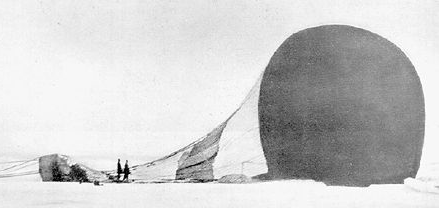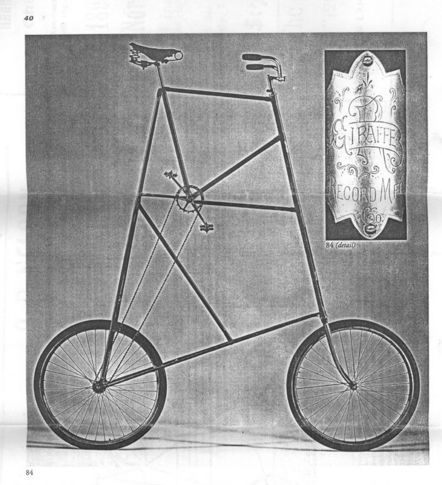
Hurricane Carol hits the Rhode Island Yacht Club, 1954.
Hurricanes seem to run in cycles of 50-70 years. Destructive storms were common between 1926 and 1960, but five of the 10 most expensive storms in U.S. history have occurred since 1990.

Hurricane Carol hits the Rhode Island Yacht Club, 1954.
Hurricanes seem to run in cycles of 50-70 years. Destructive storms were common between 1926 and 1960, but five of the 10 most expensive storms in U.S. history have occurred since 1990.

“At length, the moon arose in great splendour, and little Henry saw at a distance an old abbey, all covered with ivy, and looking so dark and dismal, it would frighten any one from going in. But Henry’s little heart, occupied by the idea of his mamma, and with grief that he could not find her, felt no fear; but walking in, he saw a cell in the corner that looked like a baby-house, and, with Fidelle by his side, he bent his little steps towards it, and seating himself on a stone, he leaned his pretty head against the old wall, and fell fast asleep.”
— From The Extraordinary Adventures of Poor Little Bewildered Henry, Who Was Shut Up In An Old Abbey For Three Weeks, A Story Founded on Fact, 1850
What do these writers have in common?
All drove ambulances during World War I.

Too much optimism is a bad thing. In 1897, Swedish engineer S.A. Andrée planned to reach the North Pole in a leaky and untested balloon, steering only by dragging ropes. He and two companions lifted off from Svalbard in July, drifted north and disappeared for 33 years.
It wasn’t until 1930 that their last camp was discovered — they had crashed after only two days and spent three freezing months trying to walk home.
“Morale remains good,” Andrée had written before his diary became incoherent. “With such comrades as these, one ought to be able to manage under practically any circumstances whatsoever.”
John Robert Conroy may have regretted bringing his bull terrier to France in World War I — the dog became the star of his unit. It won:
I’m not making any of that up. “Sergeant Stubby” fought in the trenches for a year and a half, warning of poison gas attacks, finding wounded soldiers, and listening for incoming shells. He met Woodrow Wilson and John Pershing, was wounded several times, and even learned to salute. His remains are on display at the Smithsonian.
Excerpts from 19th-century students’ physiology exams:
— From Mark Twain, “English as She Is Taught: Being Genuine Answers to Examination Questions in Our Public Schools,” 1887

Robinson Crusoe isn’t entirely fiction — it’s based on the story of a real Scottish sailor, Alexander Selkirk, who spent four years marooned on an uninhabited island.
Selkirk was sailing with privateer William Dampier in 1703 when he began to doubt the seaworthiness of their galleon, the Cinque Ports. Finally he decided to stay ashore voluntarily on the Juan Fernández islands in the South Pacific with only a musket, gunpowder, carpenter’s tools, a knife, a Bible, and his clothing.
At first Selkirk was wracked with loneliness and regret, but he soon acclimated to island life. He domesticated wild cats to keep rats at bay, grew turnips, cabbage and pepper berries, and built two huts of pimento trees. He hunted wild goats and made clothing of their skins and forged a knife from cast-off barrel rings.
There’s a telling postscript to the story. After four years and four months, Selkirk was rescued by William Dampier, the same man who had left him ashore — but Selkirk was surprised to see he was sailing a different ship. The Cinque Ports had sunk, losing most hands. Selkirk, it seems, had been right to stay on the island.
Excerpts from 112 Gripes About the French, a handbook produced to help American soldiers understand the French after the Liberation:

Evidently somebody thought this was a good idea. In the late 19th century, lamplighters used this “giraffe bicycle” to travel between gas streetlamps. If you could keep your balance you’d be sitting more than 7 feet above the ground. Watch the road.

A Navy collier during World War I, the U.S.S. Cyclops put to sea from Rio de Janeiro on Feb. 16, 1918, touched at Barbados on March 3 and 4, and was never heard from again. She took 306 crew and passengers with her.
In 1968, a diver off Norfolk, Va., reported finding the wreck of an old ship in about 300 feet of water. When shown a picture of the Cyclops he said he was convinced it was the same ship. But, strangely, even that wreck disappeared — further expeditions failed to find anything.